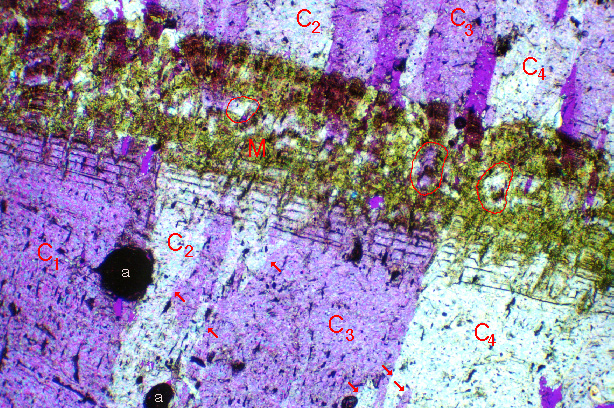Photomicrograph was taken in cross-polarized light with a gypsum plate in the light path; field of view is 2.3 mm wide. Cumberland Caverns, Tennessee, U.S.A., Mody Dick formation; thin section CuMa. Sample collected by Mr. Ethan A. Goddard.

| Figure 9-11. Layer of microcrystalline CaCO3 (M) between columnar calcite (C) above and below. C1, C2, C3, and C4 indicate four different calcite crystals that extend from below the microcrystalline zone to above it. Three circles enclose areas of crystals C2, C3, and C4 within the microcrystalline zone, and arrows point to the irregular boundaries between crystal C3 and crystals C2 and C4. Although one could envision a primary origin for this fabric via interlocking growth of calcite crystals with intermittent and local incorporation of microcrystalline CaCO3, recrystallization of microcrystalline material to columnar calcite is the more parsimonious interpretation of this fabric. Recrystallization would also explain the discontinuous and subtle layering visible in a corresponding image in plane-polarized light. Photomicrograph was taken in cross-polarized light with a gypsum plate in the light path; field of view is 2.3 mm wide. Cumberland Caverns, Tennessee, U.S.A., Mody Dick formation; thin section CuMa. Sample collected by Mr. Ethan A. Goddard. |
|
 |
|
| Back to the Table of Contents of the Atlas of Speleothem Microfabrics. |